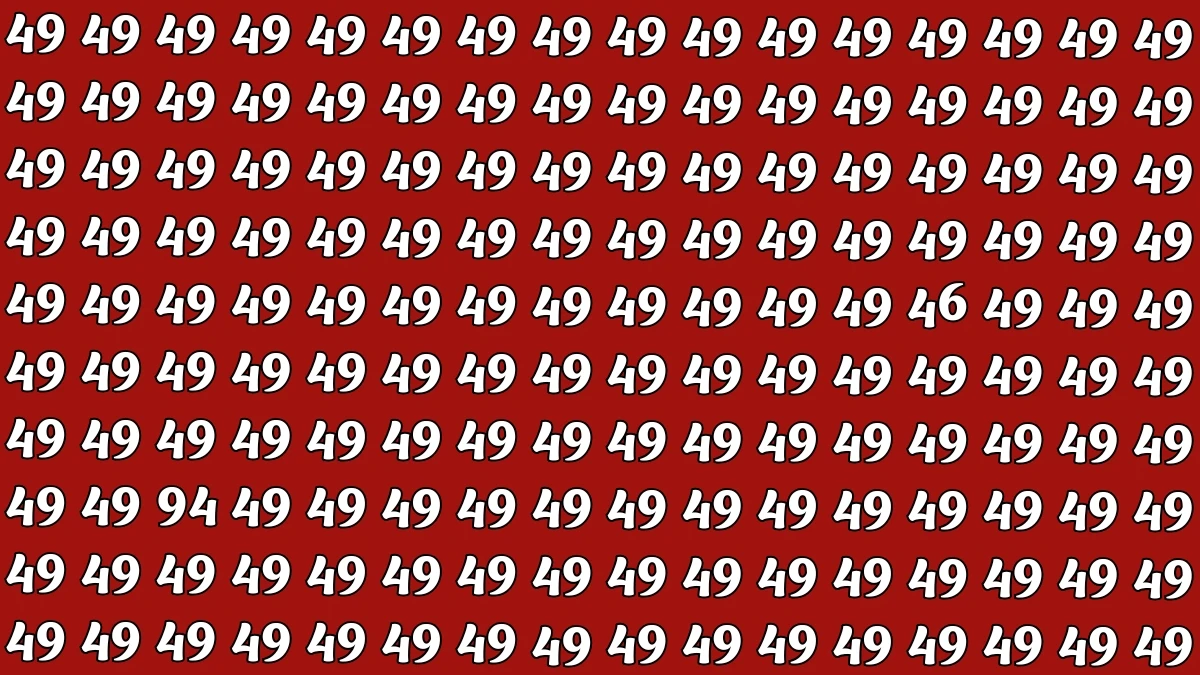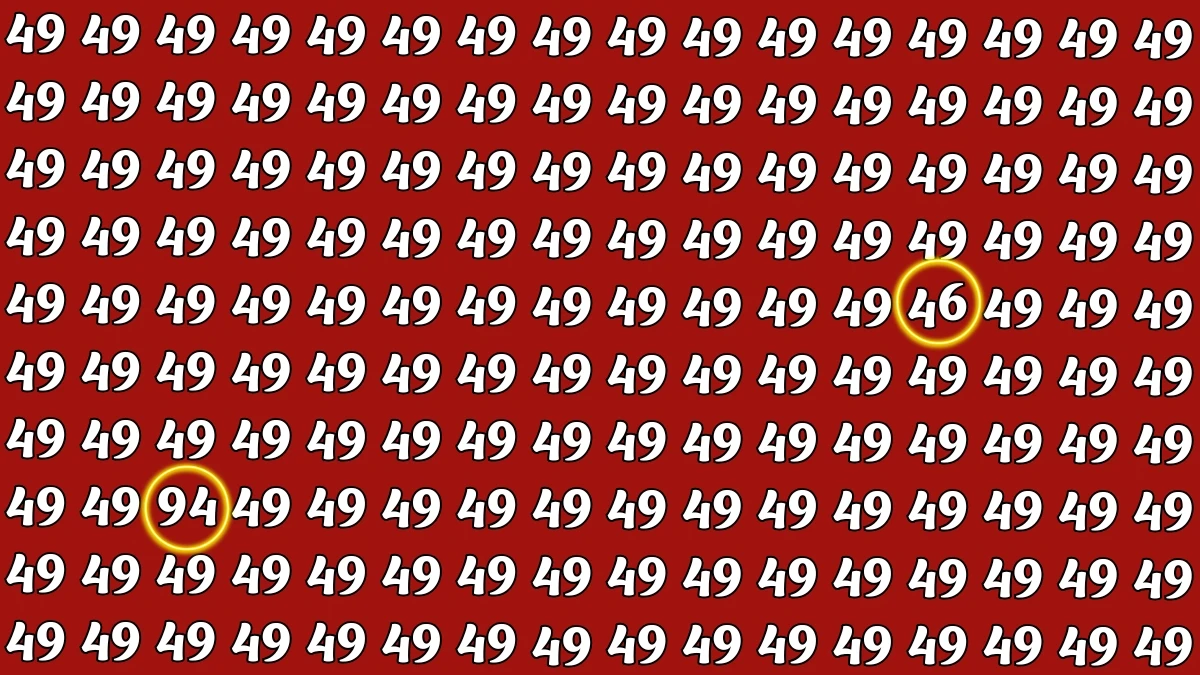Optical Illusion
An optical illusion is a visual phenomenon where our eyes perceive an image in a way that differs from physical reality.
This happens because the brain tries to interpret visual information based on patterns, context, and prior experience, sometimes leading to misperception.
For example, an illusion might make us see motion in a still image, perceive colors that aren’t actually present, or misjudge the size and shape of objects.
Optical illusions occur due to the complex interaction between light, the eye, and neural processing in the brain.
They highlight how perception is not just about what the eyes capture, but also about how the brain organizes and interprets that data.
Optical Illusion: Within 5 Seconds Spot The Number 46 and 94 among 49
This optical illusion challenges your observation skills by hiding the numbers 46 and 94 among several 49s. At first glance, the image looks like a random cluster of repeating 49s, making it hard to differentiate.
However, if you carefully scan through each section with focus, you’ll notice that the numbers 46 and 94 are subtly placed to trick your eyes.
The purpose of such puzzles is to test your attention to detail and how quickly your brain can process visual information.
If you manage to spot the numbers within 5 seconds, it’s a sign of sharp eyesight and quick recognition ability.

Optical Illusion: Within 5 Seconds Spot The Number 46 and 94 among 49 - Solution
In this number grid packed with repeating “49”, the two odd pairs hide in opposite quadrants. The “46” sits a touch above the horizontal midpoint and to the right of center.
Start at the middle, move one row upward, and scan toward the right; you’ll see a “4” followed by a curled “6” in place of the usual “9”.
The “94” appears in the lower-left quarter of the image, roughly two rows above the bottom edge and a little right of the left margin.
From the bottom-left corner, move upward a couple of rows and drift right until the “9” precedes a “4” rather than a “9”.
A quick tactic is to sweep with peripheral vision for the circular bowl of a “6” or the straight vertical of a “4” after a “9”, which break the repeated diagonal rhythm of “49”. Spot those disruptions and the numbers pop out.






